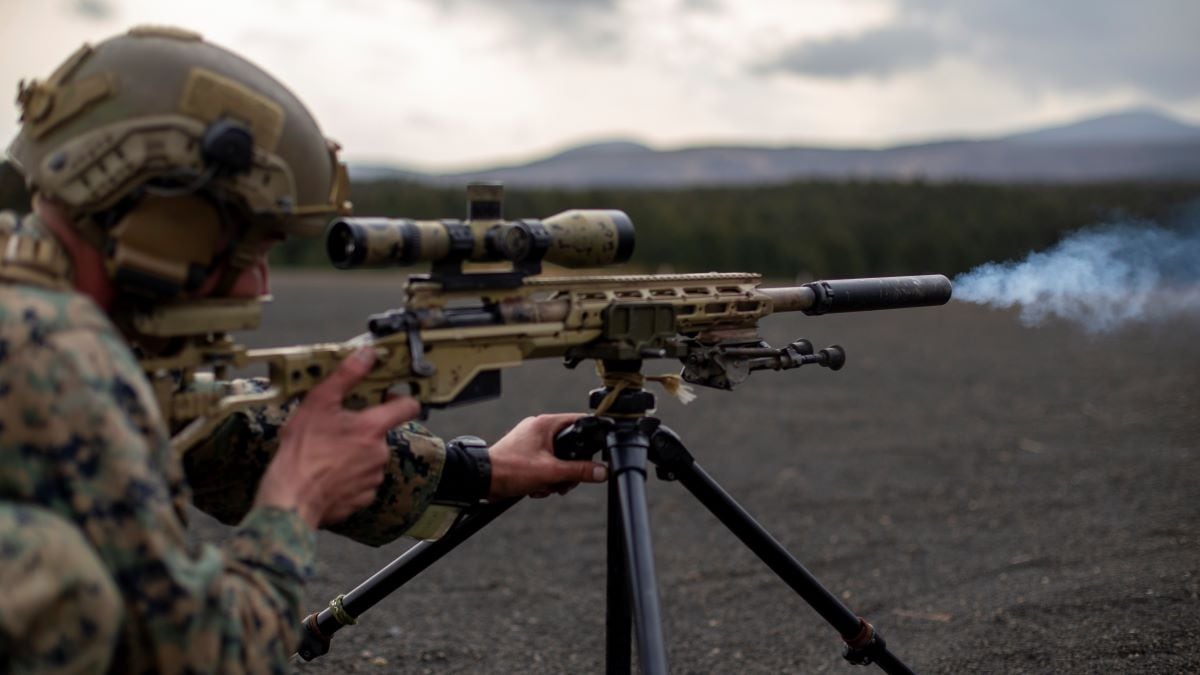WASHINGTON — The Marine Corps’ controversial decision to scrap scout sniper platoons “came from the ground up,” the second-in-command Marine said June 29.
The service in February announced an end to the elite scout sniper platoons, made up of marksmen who also were trained in reconnaissance. Infantry battalions will still have access to platoons’ precision rifles, and reconnaissance and special-operations units will still have snipers, the Marine Corps stressed at the time.
In place of 18-Marine scout sniper platoons, infantry battalions are establishing 26-Marine scout platoons focused on reconnaissance, Marine Corps Times previously reported.
At a speech at the annual Modern Day Marine conference in Washington, D.C., Gen. Eric Smith said the idea for the change originated in infantry battalions and then made its way through the regiments and then the division commanders, who brought the matter to top Marine leaders in the Pentagon.
RELATED

Commanded by two-star generals, the four Marine Corps divisions are the ground combat forces at the heart of the Marine Corps.
“It was the four division commanders who brought that and said, ‘Hey, we need more scouting. We need ISR — intelligence, surveillance, reconnaissance. We need less precision shooting,’” said Smith, the assistant commandant.
“I mean, that was from the division commanders,” he continued. “So if you wish to argue with the four sitting division commanders, go argue with the four division commanders. Good luck.”
The 1st Marine Division is based at Camp Pendleton, California, with 2nd Marine Division at Camp Lejeune, North Carolina, and 3rd Marine Division at Camp Butler in Okinawa, Japan. The Reserve’s ground combat division, 4th Marine Division, is headquartered in New Orleans, with reservists all across the United States.
Smith told reporters after his speech that the division commanders provided the feedback through the twice-annual ground board. In this case it was the one in November 2022, Marine spokesman Capt. Ryan Bruce clarified June 30.
The ground board is an opportunity for those commanders to share their thoughts directly with the commandant: “Hey, boss, here’s what you need to know,” as Smith put it.
“They just give us ideas,” Smith told reporters. “We don’t accept them all. But some we do, and that was one we accepted.”
Experimentation with infantry battalions revealed that the units had insufficient intelligence, surveillance and reconnaissance capabilities, Bruce had said in a written statement to Marine Corps Times in February. But Marines in the new scout platoons can stay hyper-focused on providing those capabilities for the battalions, he noted.
The change comes as the Marine commandant, Gen. David Berger, has instructed the Corps to get better at reconnaissance and counter-reconnaissance.
“If you’re so big and fat and immobile and vulnerable to their sensors, all the lethality in the world ain’t going to help you,” Berger told Defense News in May 2022.
Force Design 2030, as Berger’s vision for a more modern Marine Corps is called, also asks the service to “divest the preponderance of weapon-specific military occupational specialties in the infantry battalions and build highly trained Marines who are capable of employing a range of weapons and equipment,” Bruce said in the February statement.
With a shortfall in the number of snipers, the scout sniper platoons have in recent years consisted of a limited number of full-fledged scout snipers, plus marksmen who undergo on-the-job training from their officially trained peers.
That’s not the fault of the Corps’ marksmen, retired Master Sgt. Tim Parkhurst, president of the USMC Scout Sniper Association, argued in according to a February message.
“Replacing an 18-man Scout Sniper Platoon with a 26-man Scout Platoon will not solve the ‘all weather information gathering’ problem,” Parkhurst wrote. “Retaining the skill set and the combat capability of Scout Snipers by offering a viable career path to Scout Snipers and providing them with more engaged leadership might.”
Smith, a career infantryman, maintained in his speech June 29 that even non-sniper riflemen nowadays are training in precision shooting.
“Your average rifleman, who’s an expert, was plinking targets at 700 meters,” Smith said of recent experimentation with an infantry battalion. “In fact, if you didn’t hit the 700-, 800-meter target, you’re kind of chastised, you know, for being a loser.”
“That used to be a significant emotional event, hitting a target at 800 meters,” added Smith, who, judging from his uniform, has qualified as a rifle expert at least five times.
After the fall of 2024, there will be no more seats in the Scout Sniper Basic Course, though Marine snipers can still get trained at the Reconnaissance Training Center and the Marine Raider Training Center, according to the Marine Corps’ message announcing the change.
“All schoolhouses cost people,” Smith said.
Irene Loewenson is a staff reporter for Marine Corps Times. She joined Military Times as an editorial fellow in August 2022. She is a graduate of Williams College, where she was the editor-in-chief of the student newspaper.





